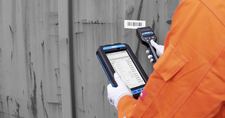Digital transformation, digitalization, Industry 4.0 – behind all of these concepts is an attempt to make production more efficient. Networked machines and plants provide data on the utilization of production lines, making it possible to reduce costs, optimize capacity, and keep downtime to a minimum.
Below are three key components of intelligent maintenance:
Machine Learning
Machine learning is the acquisition of new knowledge through an artificial system, usually a computer with a corresponding software application. The computer is pre-populated with data. It then learns to identify patterns and procedures in order to identify potential problems so staff can intervene.
The goal of machine learning is to link data intelligently, recognize relationships, draw conclusions, and make predictions. With machine learning, algorithms can be used to find independent solutions for new and unknown problems.
Condition Monitoring
Condition Monitoring is the continuous monitoring of equipment, often via sensors. The condition is constantly recorded and analyzed to ensure safe and efficient machine operation. Based on the analyzed data, changes in status and safety-relevant damage can be detected early so corrective measures can be taken.
If deviations in the recorded data occur in the production process, countermeasures or minor repairs can be carried out early. Maintenance downtimes can also be scheduled, before faults impede production. This prevents unplanned shutdowns and total machine failures, ultimately reducing costs.
Predictive Maintenance
Predictive maintenance is about anticipating required maintenance, on the basis of condition monitoring. Information about upcoming maintenance is derived from measurement and production data from machines and plants.
The goal is to proactively maintain machinery and equipment through advance planning and targeted action. Due to the self-selected point of time of maintenance or repair, an actual occurrence of a fault can be prevented. The prerequisites of predictive maintenance are large-scale data capture and analysis.

